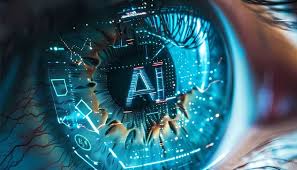
The question of whether AI will replace software developers has been a hot topic in recent years, especially with the rise of advanced AI tools capable of generating code, optimizing algorithms, and even performing bug fixes. However, the narrative isn’t as straightforward as a complete replacement. Rather, the role of software developers is evolving.
AI tools are transforming how software development is done. Platforms like GitHub Copilot and OpenAI's Codex assist developers by generating boilerplate code, offering solutions to repetitive tasks, and even suggesting improvements to existing codebases. This shift allows developers to focus on higher-level problem-solving, design considerations, and innovative solutions.
While AI can automate routine coding tasks, creativity, critical thinking, and understanding complex business needs remain uniquely human traits. AI lacks the ability to grasp nuanced project requirements, empathize with user needs, and make judgment calls based on ethical considerations.
In essence, AI will augment software developers rather than replace them. It will lead to more efficient workflows, faster prototyping, and reduced development times. However, businesses must invest in upskilling their teams to harness these tools effectively. Forward-thinking organizations will see AI as a collaborative partner in the development process, rather than a competitor.

We are at the cusp of an AI-driven revolution in the workplace. From automation of routine tasks to predictive analytics that shape business strategies, AI is fundamentally reshaping the world of work.
In industries ranging from finance to healthcare, AI tools are improving decision-making processes, reducing errors, and increasing productivity. Customer service, for example, has seen significant AI-driven advancements with the introduction of chatbots and virtual assistants that handle inquiries 24/7. In the manufacturing sector, AI-powered robots are enhancing production lines by optimizing workflows and reducing downtime.
However, this transformation is not without its challenges. As AI takes over repetitive and analytical tasks, employees must shift their focus to roles that require empathy, creativity, and strategic thinking. Soft skills such as communication, adaptability, and emotional intelligence are becoming increasingly valuable in an AI-driven world.
Organizations must also address ethical concerns around AI adoption, including data privacy, bias, and transparency. As AI systems become more autonomous, businesses need to establish robust governance frameworks to ensure these tools are used responsibly.
The future of work will not be about AI replacing human jobs but about humans working alongside AI to achieve greater outcomes. Companies that invest in reskilling their workforce and fostering a culture of continuous learning will be best positioned to thrive in this AI-driven landscape.

Migrating to the cloud is no longer a luxury but a necessity for businesses seeking agility, scalability, and cost-efficiency. However, achieving true cloud readiness requires more than just a lift-and-shift approach. It involves a comprehensive roadmap that addresses organizational, technological, and cultural readiness.
The first step in a cloud readiness roadmap is conducting a thorough assessment of the existing IT infrastructure. This includes identifying legacy systems, evaluating current workloads, and understanding dependencies. A clear picture of the current state helps organizations determine which applications are cloud-compatible and which may need reengineering.
Next, businesses must focus on building a robust cloud architecture. This involves selecting the right cloud service provider, designing scalable and secure architectures, and implementing best practices for cloud governance. Security is a critical aspect, and organizations must ensure they have policies in place to protect sensitive data and comply with industry regulations.
Equally important is the cultural shift required for successful cloud adoption. Teams must be trained to work in a cloud-first environment, embracing DevOps practices that promote collaboration and continuous improvement. Resistance to change can be a significant barrier, so leaders must communicate the benefits of cloud adoption clearly and provide ongoing support to employees during the transition.
A phased approach to cloud migration is often the most effective. Start with non-critical workloads to test the waters and gradually move mission-critical applications once the organization has gained confidence in its cloud capabilities.
Finally, continuous optimization is essential. The cloud landscape evolves rapidly, and organizations must regularly review their cloud strategies to ensure they are leveraging the latest innovations and maintaining cost efficiency.
By following a well-structured cloud readiness roadmap, businesses can unlock the full potential of the cloud, enabling them to innovate faster, scale seamlessly, and remain competitive in an ever-changing digital landscape